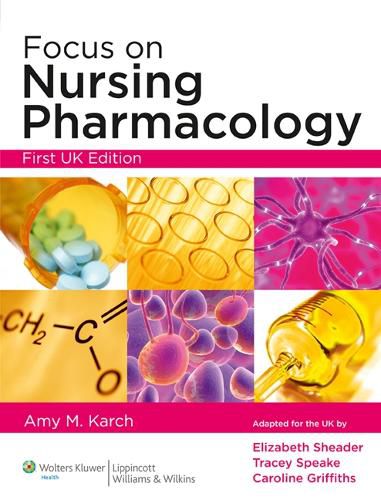Readings Newsletter
Become a Readings Member to make your shopping experience even easier.
Sign in or sign up for free!
You’re not far away from qualifying for FREE standard shipping within Australia
You’ve qualified for FREE standard shipping within Australia
The cart is loading…






Fully adapted for the UK, this text presents essential pharmacology concepts in a streamlined, user-friendly fashion. Organized by body system, the book explains the rationale for each drug class’s therapeutic actions, contraindications, and adverse effects, using the British National Formulary as its reference guide. Each chapter opens with learning objectives and ends with questions to reinforce learning. Illustrations, tables, side bars, and boxes summarize concepts and focus attention on critical thinking, patient safety, evidence-based practice, lifespan issues, patient teaching, and case study-based critical thinking exercises. Focus on Nursing Pharmacology is organized following a simple to complex approach, and is divided into eleven parts: Part I begins with an overview of basic nursing pharmacology. Each of the other parts begins with a review of the physiology of the system affected by the specific drugs being discussed. This review refreshes the information for the student and provides a quick and easy reference when reading about drug actions. Part II explains most basic element of human physiology, the cell; providing students with the background information required to understand the mechanism of action of chemotherapeutic drugs described in the subsequent chapters. Part III focuses on drugs affecting the immune system. Research knowledge in this area has expanded over recent years allowing pharmaceutical companies to develop new drugs that target the immune system. Parts IV and V of the text address drugs that affect the nervous system, the basic functioning system of the body. Following the nervous system, and closely linked with it in Part VI, is the endocrine system. The sequence of these parts introduces students to the concept of control, teaches them about the interrelatedness of these two systems, and prepares them for understanding many aspects of shared physiological function and the linking of the two systems into one: the neuroendocrine system. Parts VII, VIII and IX discuss drugs affecting the reproductive, cardiovascular and renal systems, respectively. The sequencing of cardiovascular and renal drugs is logical because most of the augmenting cardiovascular drugs (such as diuretics) affect the renal system. Part X covers drugs that act on the respiratory system, a logical progression from the cardiovascular system. Part XI addresses drugs acting on the gastrointestinal system. The gastrointestinal system stands alone; it does not share any actions with any other system.
$9.00 standard shipping within Australia
FREE standard shipping within Australia for orders over $100.00
Express & International shipping calculated at checkout
Stock availability can be subject to change without notice. We recommend calling the shop or contacting our online team to check availability of low stock items. Please see our Shopping Online page for more details.
Fully adapted for the UK, this text presents essential pharmacology concepts in a streamlined, user-friendly fashion. Organized by body system, the book explains the rationale for each drug class’s therapeutic actions, contraindications, and adverse effects, using the British National Formulary as its reference guide. Each chapter opens with learning objectives and ends with questions to reinforce learning. Illustrations, tables, side bars, and boxes summarize concepts and focus attention on critical thinking, patient safety, evidence-based practice, lifespan issues, patient teaching, and case study-based critical thinking exercises. Focus on Nursing Pharmacology is organized following a simple to complex approach, and is divided into eleven parts: Part I begins with an overview of basic nursing pharmacology. Each of the other parts begins with a review of the physiology of the system affected by the specific drugs being discussed. This review refreshes the information for the student and provides a quick and easy reference when reading about drug actions. Part II explains most basic element of human physiology, the cell; providing students with the background information required to understand the mechanism of action of chemotherapeutic drugs described in the subsequent chapters. Part III focuses on drugs affecting the immune system. Research knowledge in this area has expanded over recent years allowing pharmaceutical companies to develop new drugs that target the immune system. Parts IV and V of the text address drugs that affect the nervous system, the basic functioning system of the body. Following the nervous system, and closely linked with it in Part VI, is the endocrine system. The sequence of these parts introduces students to the concept of control, teaches them about the interrelatedness of these two systems, and prepares them for understanding many aspects of shared physiological function and the linking of the two systems into one: the neuroendocrine system. Parts VII, VIII and IX discuss drugs affecting the reproductive, cardiovascular and renal systems, respectively. The sequencing of cardiovascular and renal drugs is logical because most of the augmenting cardiovascular drugs (such as diuretics) affect the renal system. Part X covers drugs that act on the respiratory system, a logical progression from the cardiovascular system. Part XI addresses drugs acting on the gastrointestinal system. The gastrointestinal system stands alone; it does not share any actions with any other system.